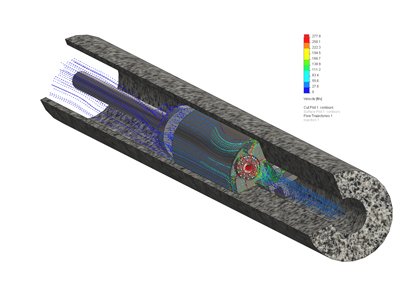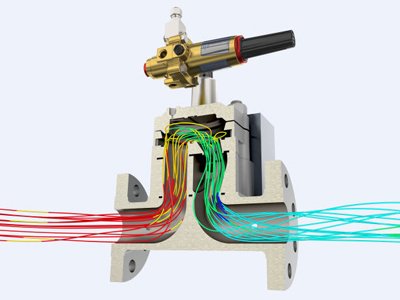Process
Process Equipment Design Validation using SOLIDWORKS Simulation – Sales and Technical Support in India since 1997



SOLIDWORKS Simulation has found numerous applications in Petrochemical, Textile and allied industries. Renowned process industries world-wide have adopted SOLIDWORKS Simulation to enhance life expectancy, reduce cost and improve reliability and efficiency of sub-systems and components. Some of the capabilities of SOLIDWORKS Simulation include:
- Stress and deflection calculations for pressure vessels, agitators, environment tanks, process equipments and comparison to ASME code
- Nozzle stress calculations
- Wind-loading, Hydro-static pressure testing of process equipments and qualification of equipments to seismic excitation based on zonal classification
- Heat transfer simulation of heat exchangers (plate type, shell-and-tube type, air-cooled), super-heaters, evaporators, condensers, cooling tanks, boilers, distillation columns and chillers
- Fluid-induced vibration simulation of columns, tube bundles, pipe supports among others
- Life expectancy calculations for dryers (static and rotary), centrifuges, rotating equipments and load-bearing members
- High-temperature applications involving seals and gaskets
- Stiffness, stress and life calculations for expansion joints
Why should SOLIDWORKS Simulation be used when Codes such as ASME, TEMA, EJMA among others, are available?
Statement in ASME Section VIII Division II clarifies this often-asked question on the relevance of FEA vis-a-vis standards. Additionally, Standards have started incorporating FEA result interpretations for validating designs, considering the accuracy of FE Technology. However, the accuracy of the results depend on inpretations by qualified and trained FE experts with knowledge of theory and practical application experience.
As stated in the foreword of the Section VIII Boiler and Pressure Vessel Code Book, “The rules established by the Committee are not to be interpreted as approving, recommending, or endorsing any proprietary or specific design or as limiting in any way the manufacturer’s freedom to choose any method of design or any form of construction that conforms to the Code rules.” In other words, the Codes and Standards Division does not “approve”, “certify”, “rate”, or “endorse” any item, construction, proprietary device or activity.
Finite Element Analysis refines design parameters arrived at based on Codes. FEA technology helps validate designs where-in closed-form solutions and safety factors cannot be arrived at, for example, transitions between circular and rectangular cross-sections at different angles of their axes.
Benefits of FEA for Process Equipments Designed using Codes
- Analysis of a combination of events such as Wind-loads, Process loads, self-weight and thermal loading
- Response to Seismic excitation
- Hydro-static testing
- Value Engineering of designs for least cost while enhancing durability
- 3D stress analysis results in accurate understanding of the physical phenomena
- Cost reduction is possible from inception of the project – at the Design Stage itself
- Accurate and reflects real-world situations

Comments are closed.